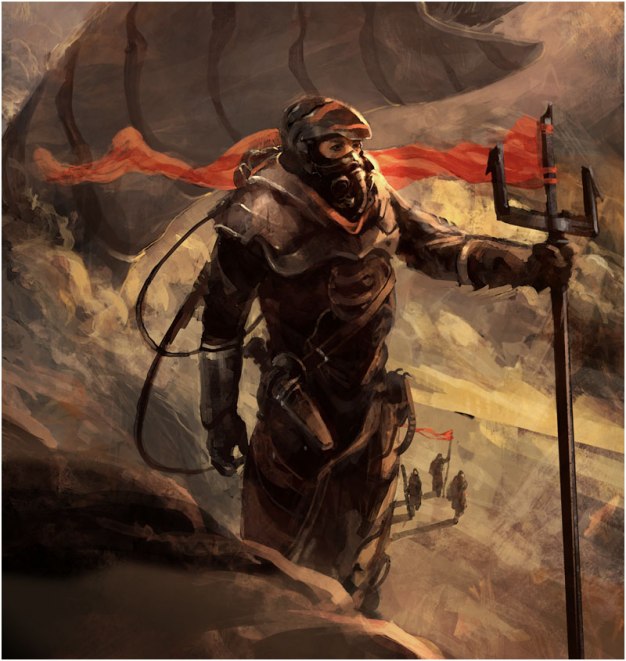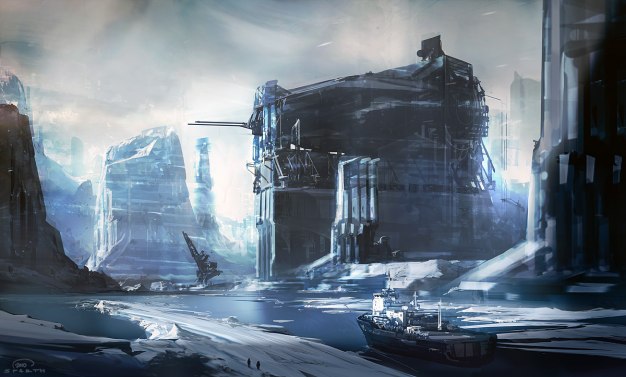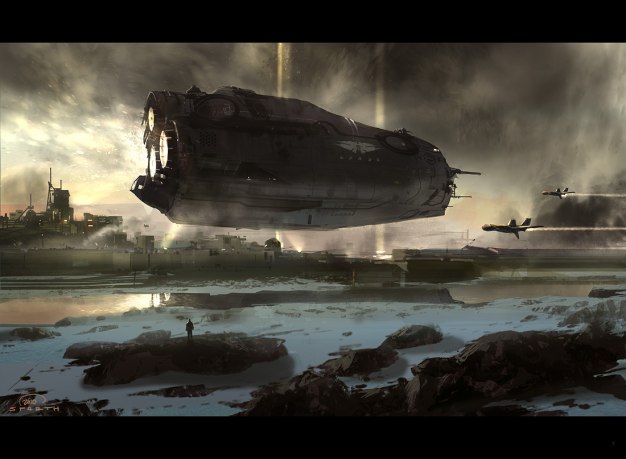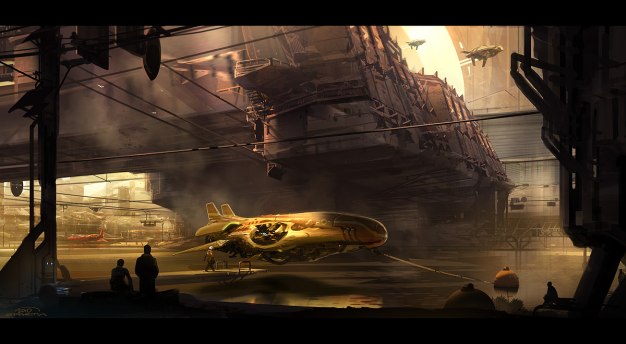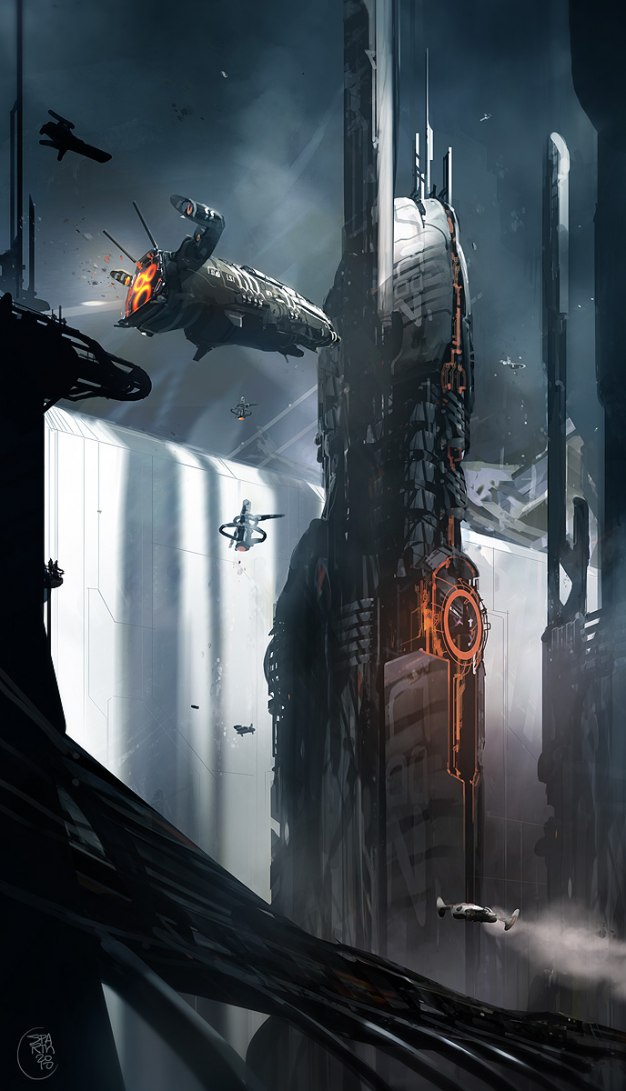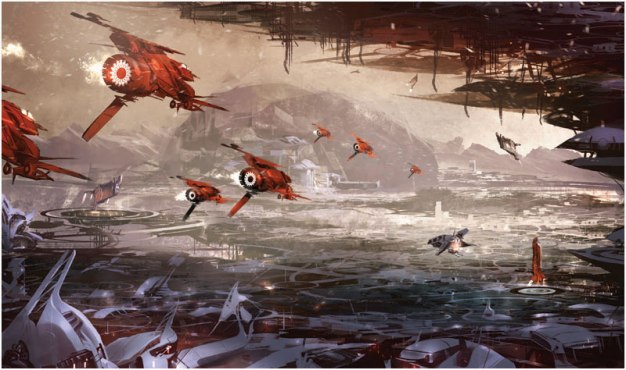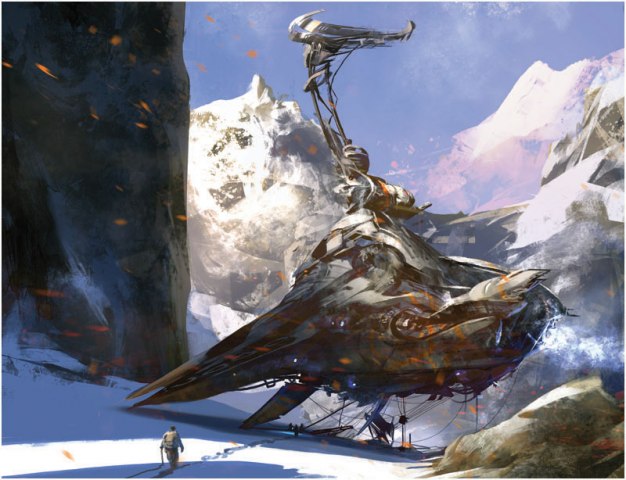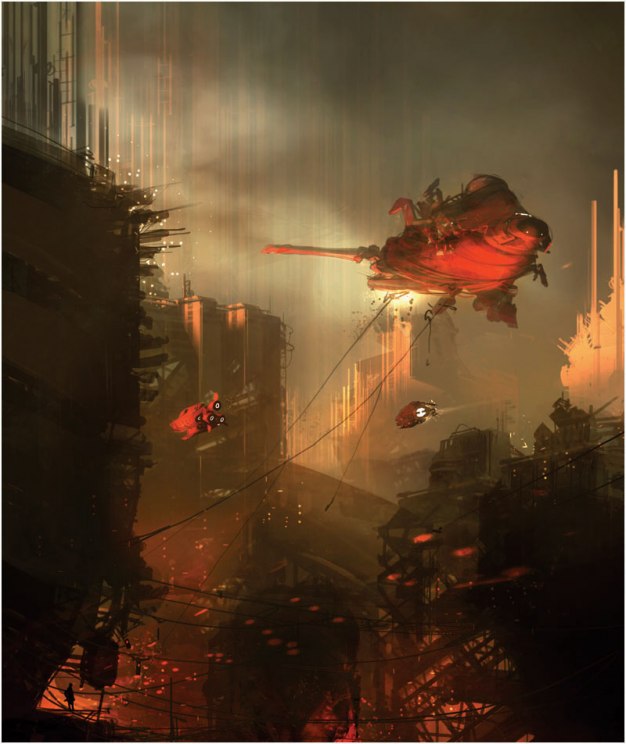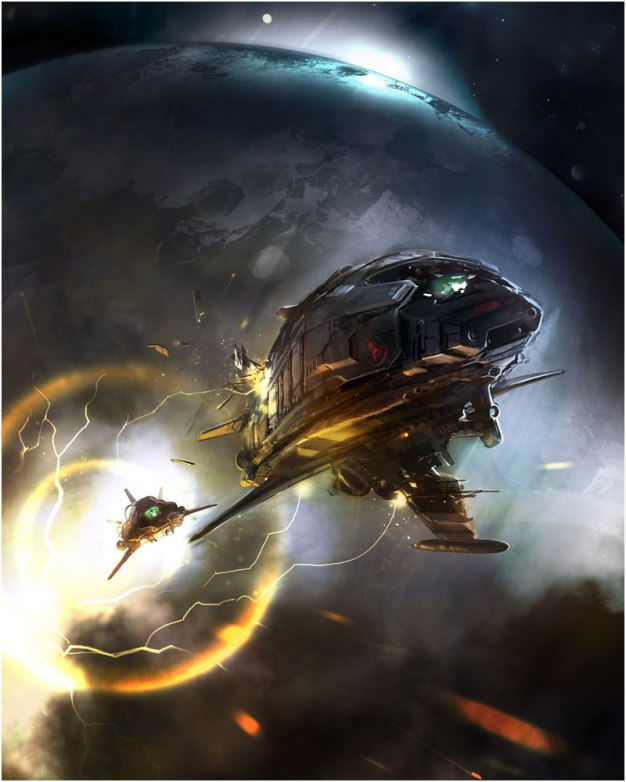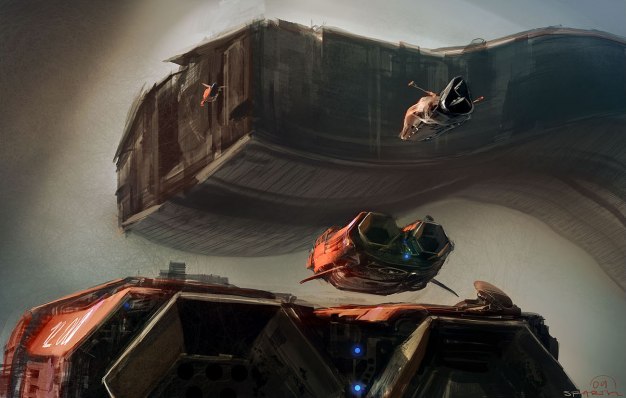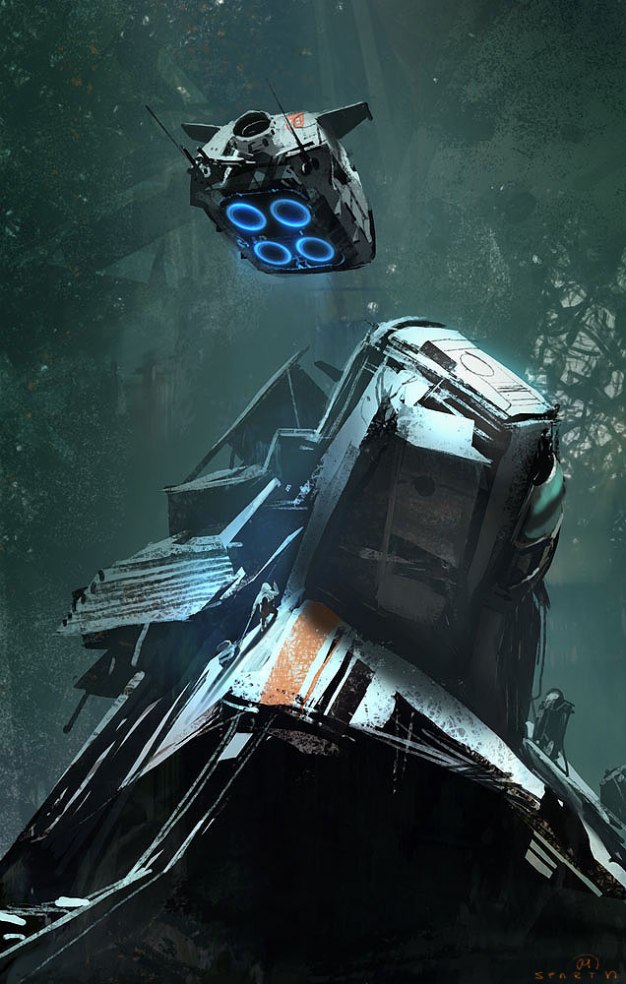Interview : Nicolas Bouvier (Sparth), concept artist
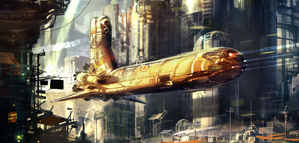
Nicolas Bouvier, best known under the name Sparth, is a worldwide known Concept Artist. He has worked on games such as Assassin’s Creed, Rage and Prince of Persia : Warrior Within. He has not only worked at Darkworks, UbiSoft or even idSoftware, but he has also creates many French and English book covers. His Concept Art have been featured in several books and his own artbook “Structura – The art of Sparth” is a real success. So it is with great pleasure that we ask him some questions!
 How did you come to this passion for illustration and painting and what studies have you made to come to this?
How did you come to this passion for illustration and painting and what studies have you made to come to this?
I draw since my early childhood. Since I am five years-old, I put in place stories accompanied by simple texts. It was most of the time about animals, with mainly birds and small pigs. Do not ask me why small pigs, I wouldn’t be able to remember me.
From this point, I realized that the only thing that passionates me was drawing, I had a rather neutral and reserved attitude for everything else. It is only much later, around 15, that I opened my mind a little more to the world, and I gradually discovered what I loved or didn’t and what makes me vibrate. In my memories, I would say that this whole process took time. I had to find me, as many of us at the same age, and it’s only during adolescence that I believe I’ve really become someone enthusiast.
Despite this introvert attitude, I still had enormous fortunate to have parents who moved from one country to another. These migrations probably haven’t left me indifferent on both cultural and artistic level. But it is only later that I realized the impact these roaming had on me.
After a philosophical tray in 1989 I spent a preparatory year at l’Atelier de Sèvres. I embedded the ENSAD decorative arts the year after.
What are your main sources of inspiration? Why trips you made are so important to you?
As a child you retain everything: the details around us, the colors, the sounds, the smells. The brain is in learning mode I assume, even more than at the adult age. For example I remember raising a stone on the dusty soil at Bali at the age of 12 or 13 while my parents were watching a cremation. There was a scorpion on that stone so I quickly threw it. A few minutes later, I found a big bill on the ground while the cremation continued. What I am trying to say is that I saw things at my level, at the ground level. If I recall correctly, people were burning the body of an important character. Men wore a kind of enormous palanquin and made huge circles while singing. Later, they burned him according to the tradition of the island. It was impressive.
All these details, small and large, are always there, years after years. And it’s only one example among others. But life is made of events like this, especially when you change country several times.
I truly believe that our artistic sensitivity is the consequence of all these years observing and learning. Now on, to a more current point of view, my sources of inspiration are multiple. From John Berkey to Vangelis, I’m feeding myself with images and sounds day after day, and this more and more quickly as the world is also moving faster and faster.
You’ve passed from the dark and nightmarish universe of Alone in The Dark to the medieval and sunny one of Assassins Creed. What is your secret to adapt yourself to so different projects? What is your technique to immerse yourself in a universe?
The Concept Design adapts itself to any universe since graphics rules to produce quality images are the same. When we know what complementary colors are, or how to develop visual directions in an image, we can extrapolate these rules to all universes, without any limitations. Knowledge of anatomy and perspective are two major conditions, namely that for these two disciplines, the learning is never over. It is, I think, a very healthy position that you must always keep.
Of course I have my preferences: science fiction and the depiction of space in all its aspects are two things that fascinate me, and I have also a complete unreasonable passion for the Alien and Blade Runner universe, both from Ridley Scott. But I also passionately love post-apocalyptic universes. I’ve also worked on the Rage project for IDsoftware in Dallas from 2005 to 2008: a complete “post apo” universe if I may say. The possibilities are endless.
Also, please note that when I create, I “live” my image. I mentally submerged myself to think only to the universe I describe. I live it almost emotionally, and music plays a huge role in this process.
As a lead artist or concept artist, what is your specific role in the development of a project? Does your job ends early in the creative process or does it continues until the project is done?
The Lead artist is often the person on who artistic and creative directors relied on to materialize their ideas on screen. For that, he must know the intentions of the current project and the implied needs. When some elements of the scenario or the game design are determined, the concept artist is also here to ensure that these concepts come to life, visually speaking. This means quick sketches in black and white, story board, ideas of characters, fast gameplay ideas put on paper, etc.
In theory we still play a role in the first two third of the production of a game, as well as throughout the period of pre-prod, of course. But it often happened that we need concept artists to the latest days and beyond, especially for marketing during the period where the game is released: videogame magazines, interviews and making-of, etc.
The videogame domain seems close to your heart. Don’t you want to explore totally different domains in the future?
I’ve often wanted to explore other domains such as movie, and I’ve worked elsewhere several times on punctual productions. But I’ve always refused to work on longer productions because most of the time it implicates a total inadequacy with the family routine. On this side, the videogame industry is more stable, not only speaking about timetable, but also financially. I have three children, and being far away from them several months in a row for a filming seems highly impossible for me.
Last year I was in touch with Dreamworks that I went to see in Glendale (California). And even though I will have been very enthusiastic to join them, we admitted with my wife that it will be better not to move on Los Angeles. We have preferred Seattle where we live since January 2009, and we are very happy here. The Washington state is extremely green and the nature is everywhere here.
Is it easy to enter in the videogame industry as an Illustrator? What are the required qualities?
To be honest, back in 1996 when I started, this type of trade was new so it is very hard to compare with the actual period. At this time, the videogame industry in France was clumsily linked to the multimedia and CD-rom jobs. I admit that the word today makes us smile, and regularly artists who proposed their services were coming from the comic books industry.
Today, the problem is that jobs are unusual for a profession which has found its place and professionalize itself in time. The videogames studios in France remain rare and de facto many young concept artists try their luck in North America or in other parts of Europe. But French artists are still there, and their originality is really well-recognized, not only in France but also worldwide.
I think that the best artists who have integrated the videogame industry nowadays are the ones who have benefited from traditional techniques and who have progressively moved to digital for the needs of the job. But what can be also very important nowadays, is to know, as an artist, how to cleverly integrate companies which need our skills and hire us. Abilities to acquire solid capacities of judgment and to know how to clearly express his ideas or concepts are as important as brilliantly making an illustration for a client.
Thanks a lot for this interview!
Thank you!
Discover the portfolio of Nicolas Bouvier and don’t hesitate to check his artbook “Structura – The art of Sparth”.

